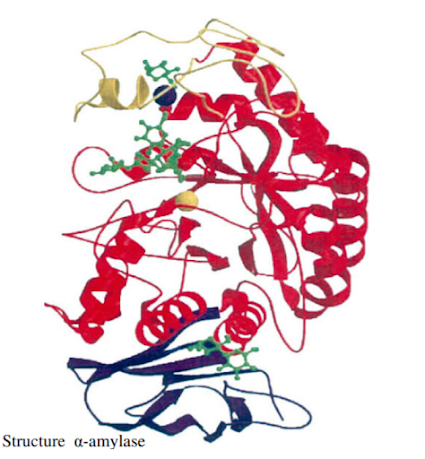Amylases are digestive enzymes which hydrolyze glycosidic bonds of starch to glucose, maltose, maltotriose and dextrin. The history of amylases began in 1811 when the first starch degrading enzyme was discovered by Gottlieb Kirchhoff in wheat and laid down the foundation for the discovery and research on Amylase.
Kirchhoff, Russian chemist of German origin, preformed an experiment, which converted four parts of water, two parts of starch, and malt into a starch paste. This paste began to liquefy into a sweet syrup. His results showed that gluten had the capacity to convert a larger quantity of starch into sugar. Thus, Kirchhoff laid the foundation for the discovery of Amylase.
In the 20th century, Borkström's group in Sweden investigated the absorption of nutrients in human adults by transintubation techniques and found that the luminal concentration of invertase was small compared to that of α-amylase. They speculated that the major locus of this enzyme activity must be in the intestinal cells.
The α-amylases were named by Kuhn in 1925, because the hydrolysis products are in the alpha configuration. In 1930, Ohlsson discovered another amylase, which yielded a β-mannose. He named it β-amylase.
Ohlsson suggested classifying starch digestive enzymes in malt as α and β amylases according to the anomeric form of sugars formed by the enzyme reaction.
As diastase, amylase was the first enzyme to be discovered and isolated by Anselme Payen and Jean-François Persoz in 1833.
The first enzyme produced industrially was an amylase from a fungal source in 1894, which was used as a pharmaceutical aid for the treatment of digestive disorders.
Boidin & Effront, 1917 were the first to use Bacillus subtilis and Bacillus mesentericus for the production of α-amylases on commercial scale using large fermenters in submerged fermentation.
History and discovery of enzyme amylase
History of science is devoted to the history of science, medicine and technology from earliest times to the present day. Histories of science were originally written by practicing and retired scientists, starting primarily with William Whewell, as a way to communicate the virtues of science to the public.
Thursday, January 20, 2022
The Most Popular Posts
-
Anton van Leeuwenhoek, the Dutchman first observed bacteria through his single-lens microscope in 1674. He made his own simple lenses to try...
-
History of Genetic Engineering The origins of biotechnology culminated with the birth of genetic engineering. Genetic engineering based on ...
-
Chlorophyll is a green pigment found in almost all plants, algae and cyanobacteria. The chloro portion of the word chlorophyll is from the ...
-
Protons Protons are positively charged atoms that reside in the nucleus of an atom. These protons add the overall positive charge of a mole...
-
The photon is known as the quantum of electromagnetic radiation. In physics, a quantum is a basic indivisible unit or state that may be pres...



